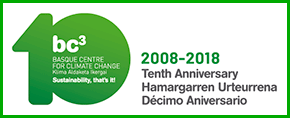
Photo: Otun River (Credit: https://lacebraquehabla.com)
The formal institutional context is the implementation of the watershed management plan. This management plan it is implemented by government institutions and determines environmental norms and land uses. At the same time, the area has the presence of multiple types of natural protected areas at the regional and national levels, with their associated management plans. The informal institutional context can be associated to the presence of an historical environmental conflict between rural inhabitants and government institutions. From 1940’s the mid upper stream has been managed from a top-down approach while affecting livelihoods, cultural identity and wellbeing of rural people. Moreover, power relations have implied that environmental norms and restrictions are heavily imposed to the poorest rural people, while other productive sectors operate without the same level of enforcement (e.g. swine and poultry). In the last 20 years, environmental organizations and local leaders have struggled in order to include (to some extent) their interests and values in management plans (e.g. ecotourism) and decision-making process. Rather than opposing to a general environmental agenda, community organizations have developed environmental projects (e.g. waste separation, agro ecological markets, ecological youth groups, a community radio station, provision of ecotourism services). Their main claim is to actively participate in decision-making processes and to define a watershed management approach that ensure their livelihoods and cultural identity.
The valuation process was intended to influence the watershed management plan and other planning instruments. These instruments have been historically oriented towards ensuring: i) fresh water provision for urban areas and ii) ecosystems and biodiversity conservation (e.g. high Andean ecosystems). The valuation process also recommended the design of management instruments (i.e. payments for ecosystems services) that may capture a wider spectrum of values (e.g. peasant identity and culture, agricultural production aimed at subsistence, traditional ecological knowledge) than those captured by the main instruments applied until today (e.g. expansion of protected areas, restrictions to agricultural production in buffer zones, land purchases).
To know more:
Suarez A., Arias-Arévalo P., Martinez-Mera E., Granobles-Torres J. C., Enríquez-Acevedo T. “Involving victim population in environmentally sustainable strategies: An analysis for post-conflict Colombia”. Science of the Total Environment. 2018, vol. 643, p. 1223-1231
Arias-Arévalo P., Gómez-Baggethun E., Martín-López B., Pérez-Rincón Widening the evaluative space for ecosystem services: A taxonomy of plural values and valuation methods. M. Environmental Values. 2017
Suarez A., Árias-Arévalo P.A., Martínez-Mera E. “Environmental sustainability in post-conflict countries: insights for rural Colombia”. Environment, Development and Sustainability. 2017, p. 1-19
Arias-Arévalo P., Martín-López B., Gómez-Baggethun E. “Exploring intrinsic, instrumental, and relational values for sustainable management of social-ecological systems”. Ecology and Society. 2017, vol. 22, num. 4



